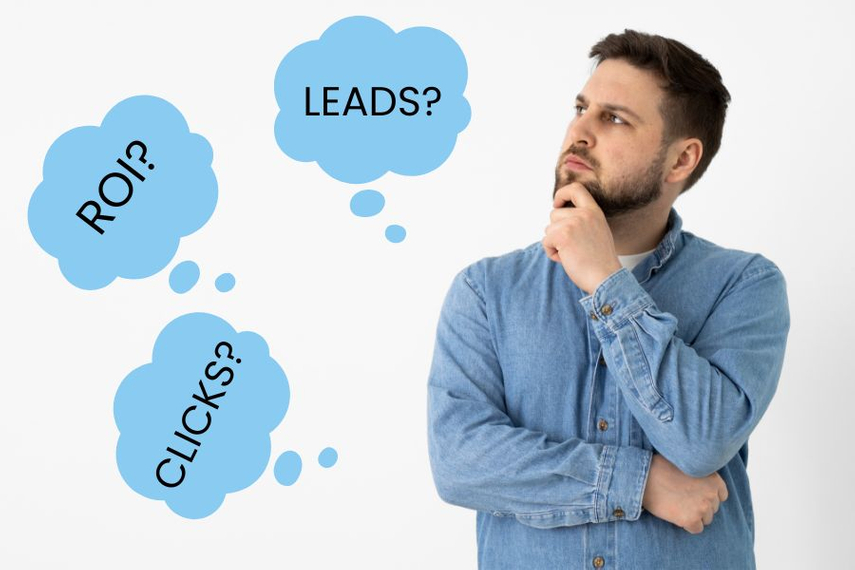
For a long time, ‘reach’ felt like victory. If a campaign was seen by many, we called it a success.
But the rules of growth have changed. Smart brands today aren’t chasing eyeballs; they’re chasing outcomes that repeat, scale and compound.
Budgets are finite, attention is expensive, and customer trust is earned moment by moment. Impressions might open the door, but outcomes are what keep relationships and businesses moving.
This shift isn’t driven by fear or boardroom panic. It’s driven by clarity. Growth now depends on smarter use of every rupee spent, every second of attention earned, and every piece of consent given.
From reach to relevance
I’ve come to believe that smarter growth beats louder growth. Brands no longer want just bigger numbers; they want numbers that build on each other—awareness that becomes engagement, engagement that turns into sales, and sales that evolve into loyalty. This isn’t about reach at any cost; it’s about relevance with purpose.
Consumers, too, are voting with their thumbs. They want usefulness, not noise.
If an experience helps them learn, try, decide, or belong, they stay. If it doesn’t, they scroll past. That forces brands to focus on interactions that are genuinely helpful and move the customer closer to action.
Trust now sits at the centre of this equation. Whether you call it consent or value exchange, the future depends on invited connections.
When people opt in at an event or activation, they’re not just showing interest; they’re signalling openness to an ongoing relationship. That’s a powerful moment of trust, and it deserves to be earned, not assumed.
But as the lens shifts, we also face new dilemmas. Credit attribution, for one, is increasingly complex.
Customer journeys now span multiple channels and weeks, so isolating one ‘magic touch’ is unrealistic. I’ve learned that it’s better to plan for multiple proof points than to chase a single attribution win.
Short-term versus long-term growth is another balancing act. If we obsess only over this month’s clicks, we risk starving next quarter’s conversions.
The same goes for attention and action: attention has value only when it leads somewhere. This could be a trial, demo, meeting, or purchase.
And while live, in-person moments can be incredibly rich, if we fail to capture who attended, what they did, and what happened next, all we’re left with is a highlight reel, not tangible proof of impact.
Designing the Ladder: From Impressions to Enterprise Value
To make sense of this new world, I use what I call The New Client Demand Curve — a simple ladder that helps turn presence into profit.
It starts with impressions, but not in the traditional sense of who merely saw it. What matters is who stayed, interacted, or leaned in. That’s qualified attention.
From there, attention must convert into behaviours such as scans, saves, sign-ups, trials, demos, booth visits or session check-ins. These tangible actions form the bridge between interest and intent.
When enough of these behaviours emerge, they create a pipeline. It is about real, qualified interest that is reflected in meetings booked, opportunities opened, and faster movement between funnel stages.
That pipeline, in turn, should translate to revenue and margin, be it closed-won deals, healthy unit economics, and payback periods that make commercial sense. Finally, consistent revenue builds enterprise value. Think retention, repeat purchase, advocacy, and even early demand signals such as share of search or direct visits.
For those of us in experiential marketing, the challenge is to design both the journey and the measurement so that each rung naturally feeds the next. To do this effectively, I keep five lines in view and track a couple of key signals under each.
The first is trust and memory. Did we make it easier for customers to remember and prefer the brand? That could be measured through post-experience intent or brand recall.
The second is active engagement. Did people lean in, stay longer, interact, or save content?
The third, qualified opportunities, asks whether the right people raised their hands through meetings, demos, or trials. The fourth, sales and margin, assesses whether the activity helped close deals or improve deal quality. Finally, loyalty and advocacy tell us whether buyers are staying, expanding, or referring others.
It’s not rocket science, and no acronyms are required. The key is deciding how you’ll measure movement along each line, much before you begin.
Building for outcomes before day one
I’ve learned that designing for ROI has to start before the campaign launches. The first step is to begin with the end in mind. Ask one clear question: What would make this a commercial win? Write one sentence that everyone can repeat — something like, ‘Turn 200 right-fit conversations into 40 demos and 10 pilot projects.’
Then, make every touchpoint earn a next step. A talk should lead to a QR code with a clear promise. A booth interaction should lead to a scheduled demo. A demo should lead to a tailored offer. “What’s the next step?” should be the silent mantra behind every creative idea.
Next, earn the relationship. People’s data is valuable, and their attention even more so.
Offer something real in exchange; it could be priority access, expert content, tools, or community invitations. Say what they’ll get and when. Keep forms short and respect their time.
Data capture should be simple, and follow-up should be fast. I’ve seen success using QR check-ins, short forms, and clear labels capturing who they are, what they’re interested in, and what action comes next. Sync everything to your CRM and enforce a 24-hour handshake rule. Every qualified lead deserves timely, relevant follow-up.
Every week, I track three numbers religiously: the number of meetings sourced (or demos or trials), the stage conversion rate (are people moving forward?), and the velocity (how fast they move between stages). If any of these metrics stall, it’s time to adjust the audience, offer, or creative immediately.
To make reporting simple, I tell the story on one page. The top half shows pipeline created, deals closed, time saved, and indicative payback. The bottom half shows brand signals—trust, consideration, and search interest. Using the same format each week helps leaders see trends, not noise.
Finally, I keep testing human. Rather than testing five variables, I test two — two value propositions, two formats, or two calls-to-action. This isn’t about A/B testing at scale; it’s about learning what truly helps people decide and then doubling down.
The smarter brief: What clients expect next
Today’s clients are clear about what they expect—and reward. They want proof over polish. The glossy sizzle reel may look great, but measurable results are non-negotiable. Every engagement should begin with a hypothesis: “Here’s how this experience will create revenue, loyalty, and learning.”
They also expect first-party data by design—clear value exchange, clean consent, and respectful follow-up. They want balanced growth, where activities drive both conversion and long-term brand equity. And they expect shared visibility and speed—access to the same data, a simple cadence of updates, and the courage to pivot when numbers speak louder than opinions.
The demand has changed not because the industry got fearful, but because it got smarter. Brands now seek partners who can turn moments into momentum, and show the math without killing the magic.
The playbook is clear: build for usefulness, design for next steps, earn consent, and report with clarity. When we do that, impressions stop being the destination—they become the start of a compounding engine.
The higher the wave, the bolder the surf. The new client demand curve is that wave—paddle early, stand tall, and ride it all the way to ROI.

- Valay Lakdawala, co-founder, NeoNiche Integrated Solutions



.jpg&h=334&w=500&q=100&v=20250320&c=1)
.jpg&h=334&w=500&q=100&v=20250320&c=1)
.jpg&h=334&w=500&q=100&v=20250320&c=1)



.jpg&h=334&w=500&q=100&v=20250320&c=1)


.jpg&h=268&w=401&q=100&v=20250320&c=1)


.png&h=268&w=401&q=100&v=20250320&c=1)
.png&h=268&w=401&q=100&v=20250320&c=1)
.png&h=268&w=401&q=100&v=20250320&c=1)


